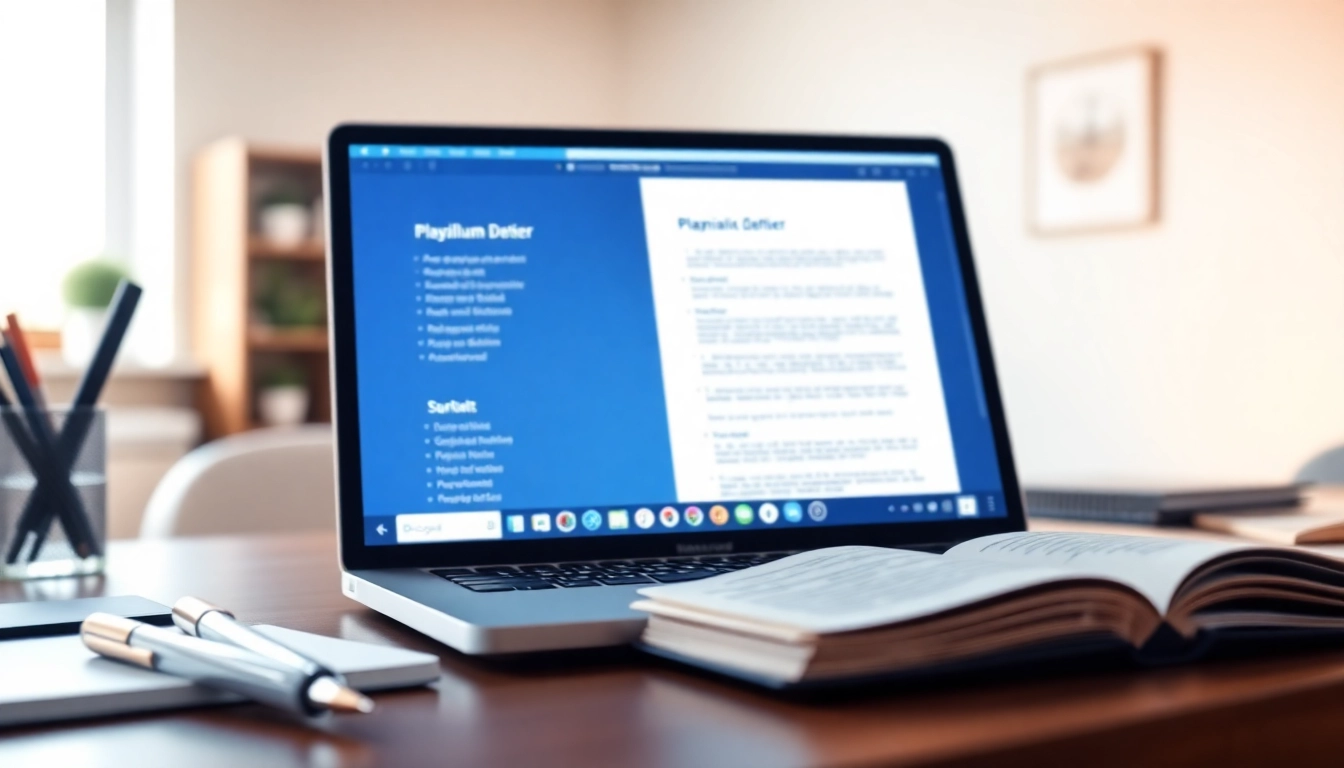Understanding the Importance of a Plagiarism Detector
The integrity of written work is paramount in every academic and professional field. As digital content continuously proliferates on the internet, the risk of unintentional or intentional plagiarism has become a significant concern. It is here that a plagiarism detector plays a crucial role. This article explores the nuances of plagiarism, the consequences of academic dishonesty, how plagiarism detectors can help maintain integrity, and what to look for when selecting a tool.
What is Plagiarism and Why is it a Concern?
Plagiarism is defined as the act of using someone else’s work—whether text, ideas, or processes—without proper attribution. It can range from outright copying to a more subtle form, such as closely paraphrasing another’s work without citation. In academia, this is particularly concerning as it undermines fair evaluation and intellectual development. While some may argue that an unintentional error is less harmful, the line between intent and error can often be blurred, leading to severe consequences.
Consequences of Plagiarism in Academia
The consequences of plagiarism are profound and multifaceted. Academic institutions typically respond with severe penalties, including:
- Disciplinary Actions: This may involve failing the assignment, failing the course, or even expulsion from the institution.
- Damage to Reputation: Both personal and institutional reputations suffer, potentially affecting future educational opportunities and job prospects.
- Legal Ramifications: Plagiarism can lead to legal issues, especially when copyrighted material is involved.
Consequently, understanding and avoiding plagiarism is crucial for students and professionals alike.
How Plagiarism Detectors Promote Academic Integrity
Utilizing plagiarism detectors is a proactive approach toward maintaining academic integrity. These tools provide a mechanism to identify similarities between submitted works and existing literature, ensuring that students are held accountable for originality. They not only catch potential academic dishonesty but also serve educational purposes, reinforcing the importance of citation and originality in writing.
Key Features of Effective Plagiarism Detectors
When selecting a plagiarism detector, one should consider various essential features that make these tools effective and reliable.
Real-Time Text Analysis and Comparison
Effective plagiarism detectors offer real-time analysis, allowing users to see potential matches while writing. This feature helps in identifying problematic sentences or phrases and provides instant feedback. Advanced tools leverage large databases of academic literature, articles, and web content to compare submissions accurately.
User-Friendly Interface and Accessibility
A user-friendly interface is critical for optimal use of plagiarism detectors. Tools should be intuitive, allowing users—whether seasoned academics or students—to navigate easily. Accessibility across various devices, including smartphones and tablets, also enables users to check their work conveniently, thus fostering the habit of originality.
Multi-Format Compatibility for Various Documents
Today’s academic and professional environments require compatibility with various formats, including Word documents, PDFs, and online submissions. A comprehensive plagiarism detector should support different file types so that users can check their work without the hassle of formatting changes.
Comparing Popular Plagiarism Detectors: Pros and Cons
With numerous plagiarism detection tools available, it’s imperative to understand what each offers. Here, we review some of the leading tools in the market—Grammarly, Scribbr, and DupliChecker—examining their respective advantages and limitations.
Review of Leading Tools: Grammarly, Scribbr, and DupliChecker
Each of these platforms has unique strengths:
- Grammarly: Renowned for its grammar checking capabilities, Grammarly’s plagiarism detector is robust, utilizing advanced AI to assess and ensure originality. However, some users might find access to certain features requires a premium subscription.
- Scribbr: This tool is particularly useful for academic texts, featuring a comprehensive database that rivals university standards. Its advanced reporting features enable users to understand the nature of the potential plagiarism detected. However, the service can be relatively pricey compared to others.
- DupliChecker: Known for its free service, DupliChecker is straightforward and effective for casual users. Its limitations, however, include a cap on the number of checks per day without a subscription.
How to Choose the Right Plagiarism Detector for You
Choosing the right plagiarism detector often depends on user needs. Here are steps to help make an informed decision:
- Identify Your Needs: Assess whether you need a tool for academic writing, content creation, or casual web writing.
- Consider Cost: Determine your budget, keeping in mind that higher-priced tools often offer more features.
- Test Features: Use free trials to evaluate usability, real-time processing, and report comprehensiveness.
Advanced Features: AI Detection and Reporting
In addition to basic plagiarism detection, some tools offer advanced features such as AI-generated content detection. This capability is crucial as more content is generated using AI technologies. Tools using AI algorithms can provide detailed reports that help users understand both original and copied content metrics, further guiding them to enhance their writing quality.
Best Practices for Using a Plagiarism Detector Effectively
Now that we understand the importance of plagiarism detectors and what features to look for, let’s explore best practices to ensure effective usage of these tools.
Drafting Content with Originality in Mind
To minimize reliance on plagiarism detectors, authors must embrace originality from the start. This encompasses thorough research, the development of unique perspectives, and incorporating personal arguments. Adopting a proactive approach to originality not only enhances the writing process but also builds confidence in the integrity of one’s work.
Strategies for Paraphrasing and Citation
Successful writing often involves referring to other works. Here are strategies to paraphrase and cite effectively:
- Understand Before You Write: Comprehend the source thoroughly to convey the idea in your unique voice.
- Use Various Sources: Rely on multiple references to avoid excessive borrowing from a single source.
- Master Citation Styles: Familiarize yourself with various citation methods (APA, MLA, Chicago) to ensure all borrowed ideas are appropriately attributed.
Using Plagiarism Reports to Improve Writing
A plagiarism report should not merely be a checklist for errors; it is a learning opportunity. Authors should take time to review the findings, understand why specific sentences were flagged, and consider how to express similar ideas differently in future writings. Continual learning and adaptation will foster better practices over time.
Measuring the Effectiveness of Your Plagiarism Detector
Finally, gauging the effectiveness of a plagiarism detector is crucial for ensuring it meets the needs of the user. This can be done through various methods.
Interpreting Detection Reports and Feedback
Users should not only focus on whether content is flagged as plagiarized but analyze the report’s details. Understanding the percentage of overlap, sources cited, and recommended changes provides valuable insight into writing improvements.
Integrating Detector Use in Routine Writing and Research
To maximize effectiveness, integrating the use of plagiarism detectors into regular writing habits is key. Setting aside time after completing drafts to run checks can make plagiarism detection a seamless part of the writing process rather than an afterthought.
User Reviews and Case Studies of Successful Usage
Real-world examples illustrating successful outcomes from utilizing plagiarism detectors can further reinforce their value. Consider success stories from educators who have improved student outcomes with consistent detector use or content creators who have maintained high standards of originality and integrity in their work. User reviews often reflect practical insights about the ease of use and effectiveness of different tools over time.



